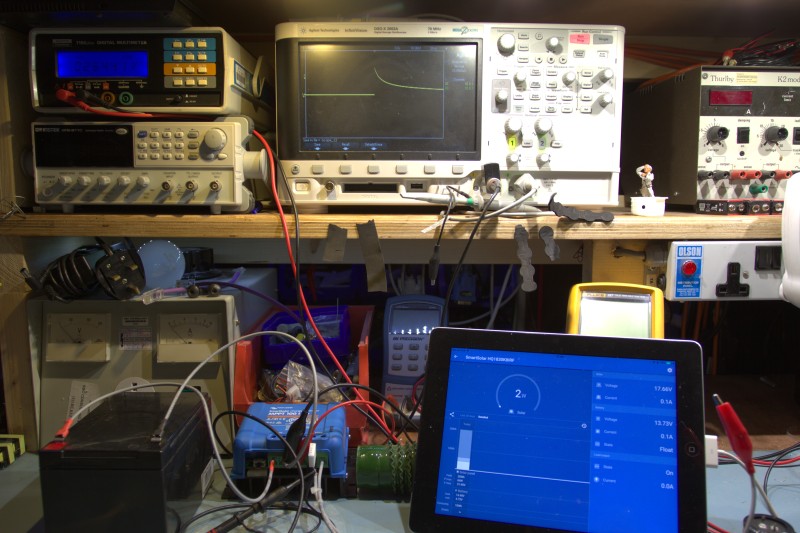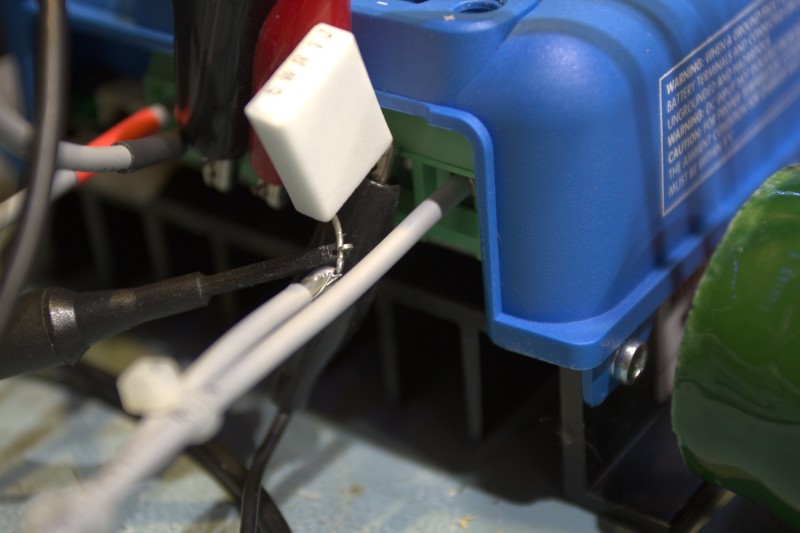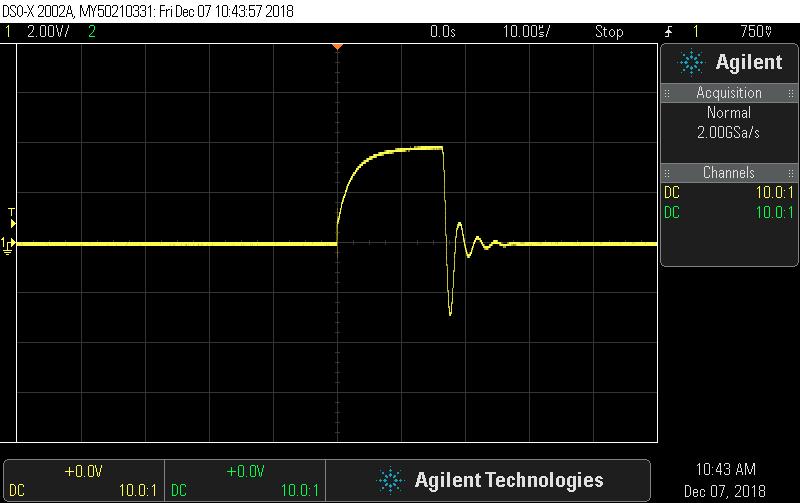I have noted several people have problems with load switching off eg fridge.
So am testing with a simple halogen lamp which draws 4.5amps. The lamp will stay on in bulk and absorb mode but turns off in float mode. It works fine with no pv panel at all (draws power from battery through reg) but will not turn on in float mode when pv is connected??
Is this a software fault, I am using f/w v1.37



 You can see that the initial burst of current peaks at about 12A, the filament heats up and the current tails off gradually over the next 100mS. Good, no problems.
You can see that the initial burst of current peaks at about 12A, the filament heats up and the current tails off gradually over the next 100mS. Good, no problems. This time, upon connection of the lamp, the inrush current peaks at about 40A and finally after around 15μS the Load switches off and this is reflected in the VictronConnect App. A second or two after disconnecting the lamp, the Load output is turned back on. I repeated ths a couple of times with similar disconnection timescales.
This time, upon connection of the lamp, the inrush current peaks at about 40A and finally after around 15μS the Load switches off and this is reflected in the VictronConnect App. A second or two after disconnecting the lamp, the Load output is turned back on. I repeated ths a couple of times with similar disconnection timescales.
 The short circuit current peaks at over 60A, and would have kept going, with a disconnection time of roughly 5μS - give or take.
The short circuit current peaks at over 60A, and would have kept going, with a disconnection time of roughly 5μS - give or take. A bit late to this thread I know, but my solution to the fridge start-up problem was very simple. The overcurrent limit on these units is obviously very fast acting and I notice a lot of people attempting to absorb the inrush current with NTCs etc. My approach, instead of trying to absorb high current peak, was to bypass the controller for around a second with a very simple circuit of only 4 readily available and cheap components. A brief sescription of the circuit: When the fridge compressor kicks in the current limit of the MPPT activates and the voltage starts to drop. This in turn switches the TIP36 on via a 1000uf and 6R8 resistor just long enough to supply the high inrush current at which point the MPPT controller takes over again. The TIP36 will handle 25A continuous, 50A peak so will easily handle the power needs of a fridge compressor. The 6R8 is just to limit the base current to 2A (limit for TIP36 = 5A) and the 10k is just to discharge the capacitor. I've had this running for months with no problem and can track all my loads in and out. Schematic attached.
A bit late to this thread I know, but my solution to the fridge start-up problem was very simple. The overcurrent limit on these units is obviously very fast acting and I notice a lot of people attempting to absorb the inrush current with NTCs etc. My approach, instead of trying to absorb high current peak, was to bypass the controller for around a second with a very simple circuit of only 4 readily available and cheap components. A brief sescription of the circuit: When the fridge compressor kicks in the current limit of the MPPT activates and the voltage starts to drop. This in turn switches the TIP36 on via a 1000uf and 6R8 resistor just long enough to supply the high inrush current at which point the MPPT controller takes over again. The TIP36 will handle 25A continuous, 50A peak so will easily handle the power needs of a fridge compressor. The 6R8 is just to limit the base current to 2A (limit for TIP36 = 5A) and the 10k is just to discharge the capacitor. I've had this running for months with no problem and can track all my loads in and out. Schematic attached.